
Chips and cards are shown on a table during Day 1C of the World Series of Poker main event at the Rio Las Vegas Saturday, July 9, 2011 in this file photo.
Wednesday, July 10, 2013 | 2 a.m.
2013 WSOP Main Event coverage
Decisive hands in the World Series of Poker Main Event create an aura that rivals those belonging to the personalities that play them out.
Chris Moneymaker now has a bust at the Rio depicting his “Bluff of the Century” made 10 years ago in poker’s $10,000 buy-in world championship. The 10-2 starting hand Doyle Brunson used to win two Main Events is as legendary as “The Godfather of Poker” himself. Johnny Chan roping Erik Seidel along heads-up in the 1988 Main Event is immortalized in the movie “Rounders.”
The examples are endless, and a handful more are produced every year. Not a day goes by at the Rio without hearing a table of an unbelievable hand, especially in the late stages of the tournament where high-leverage situations abound.
Now in my fifth year covering the Main Event, which holds its second Day 2 session Wednesday, I’ve witnessed or heard about more than I can remember. I thought some of the most significant deserved chronicling.
-
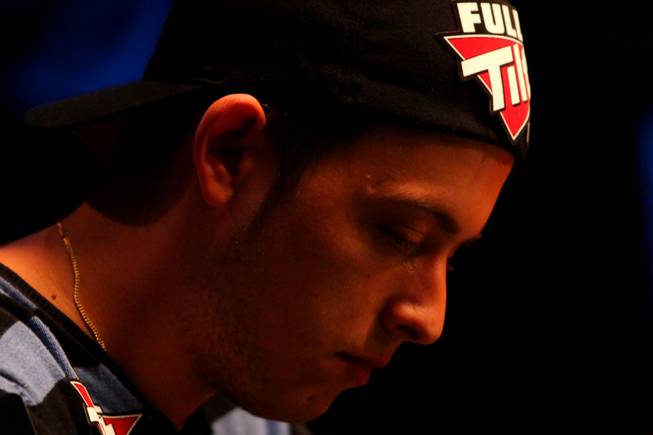
10. Filippo Candio’s 7-to-1 prayer answered
As an established professional who had won the Poker Player’s Championship a month earlier, Michael “The Grinder” Mizrachi garnered the most attention on the summer’s final day of the 2010 WSOP with 20 players remaining.
But it was a more anonymous player who had turned heads and built the chip lead with a week’s worth of flawless execution — Joseph “subiime” Cheong.
The 24-year old had outplayed several hopefuls left in the field, particularly abusing 26-year-old Italian Filippo Candio. That backdrop set the scene on ESPN's featured stage for what another player at the table regarded as “one of the most disgusting hands I’ve ever seen.”
Cheong, holding pocket aces, re-raised Candio, who had 7-5 suited, before the flop and got a call. Cheong kept his aggression when the first three community cards were 5-6-6, re-raising Candio all-in.
Candio fiddled with his chips, making most in the Rio believe he was posturing before an inevitable fold. But he stunningly called off his 12-million chip stack and sheepishly flipped over his pair of 5s.
Candio had a 13 percent chance to win the hand but, sure enough, hit an 8 on the turn and a 4 on the river to make a straight. To add insult to injury, he ran around in circles and screamed in celebration while Cheong counted off the chips to ship over.
-
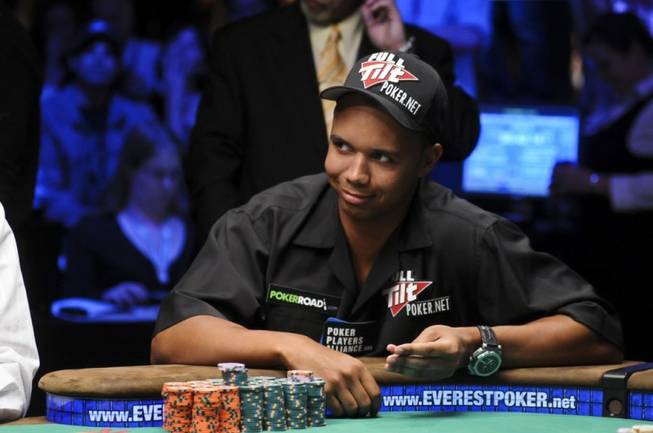
9. An amateur mistake from the consummate professional
Argue that someone other than Phil Ivey is the best poker player in the world today and those in the poker community might at least listen to the debate.
When Ivey was in the middle of his run to the 2009 Main Event final table, however, there was no question whatsoever. Ivey had lapped the competition multiple times over. Period.
So how exactly did he make the summer’s most nonsensical mistake? Everyone was trying to answer that question after seeing footage of Day 8 of the Main Event.
Ivey — with 8 of spades, 8 of diamonds as his hole cards — called a re-raise from Jordan Smith, who had ace of diamonds, 9 of clubs. The two checked the 5-queen-10-queen-ace board with four spades all the way down.
Ivey had the winning hand with a flush, but didn’t realize it. When Smith announced he made a pair of aces, Ivey shook his head and tossed his cards away.
“I never looked back at my hand once,” Ivey later explained on ESPN. “I kind of take for granted I know what I have because I’ve played so many poker hands.”
“I was getting 100 phone calls from my friends making fun of me. They say, ‘I’m betting on you and you don’t even know what hand you have.' Of course, if any one of my poker buddies did that, I’d be all over them.”
-
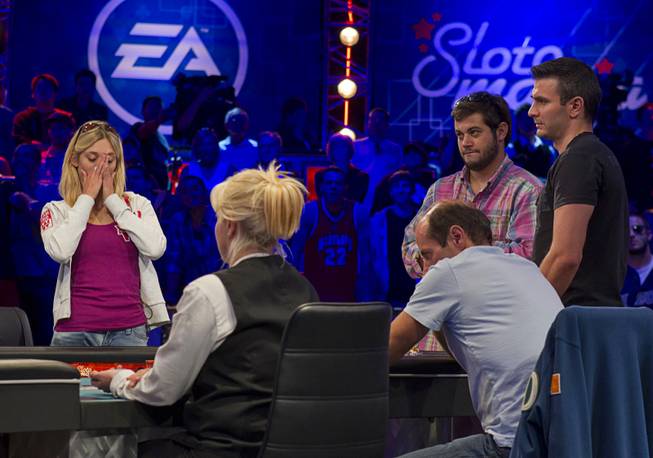
8. Andras Koroknai saved by the muck
If this were a list of the most controversial hands, last year’s Day 5 mess involving Andras Koroknai and Gaelle Baumann would run away with top honors.
The hand started with Baumann putting in a minimum raise. A short-stacked Koroknai didn’t realize it and announced he was all-in from the small blind.
When the big blind folded, Koroknai released his hand before Baumann acted. He recovered one card when he recognized his mistake, but the second was jumbled with the rest of the discarded deck and irretrievable.
After a length discussion, the floor man and Tournament Director Jack Effel ruled that Koroknai wouldn’t have to forfeit his entire stack to Baumann, who held pocket kings, because she hadn’t announced her intentions when the mistake occurred. Koroknai only had to pay off Baumann’s initial raise.
The poker community debated the decision for months to come as the way the tournament played out put more emphasis on the encounter.
Two days later, Koroknai knocked out Baumann in 11th place with ace-king against ace-jack to help him reach the final table. Baumann earned $590,442 for her deep run.
Koroknai eventually finished in sixth place and cashed for $1.6 million, but did he even deserve the chance?
-
7. Greg Merson’s bluff that wasn’t a bluff
The fact that Greg Merson ended up holding the best hand didn’t minimize the courageous move he made against Jake Balsiger during three-handed play at last year’s final table.
In position against Balsiger, the eventual 2012 world champion called bets on every street of a 3-9-8-4 board. When a 6 landed on the river, Balsiger kept his story up by betting out 13 million chips to create a pot worth 45 million.
Merson announced he was all-in, which induced a fold from Balsiger. While his fans celebrated, Merson showed queen-jack for nothing more than a busted straight and flush draw.
Turns out, Balsiger didn’t have any better. The 21-year-old Arizona State student was bluffing all along with queen-10.
Merson’s play would have cemented itself more in WSOP lore had Balsiger let go of a holding like pocket 10s or ace-9 — hands definitely within his range — but still illustrated a larger point.
Merson was far and away the best player a year ago with the strongest handle on the rest of the final table, ultimately leading him to the title.
-
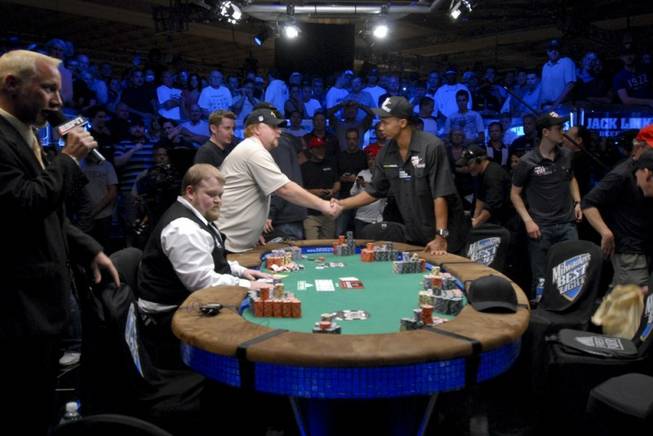
6. Apple a day won’t keep the bad beats away
The lasting image of the 2009 Main Event wasn’t the champion posing with his piles of cash and new bracelet like every other year.
It was Phil Ivey chomping on that darn apple. A major showdown between Ivey, the world’s best player, and Darvin Moon, an amateur 45-year old logger from Maryland, felt predestined at the final table.
It came with seven players left and Ivey at risk right after he began nourishing himself with a red apple at the table. Ivey was way ahead before the flop, with ace-king to Moon’s ace-queen.
But one of the three remaining queens in the deck was the first visible card on the flop to score Moon the elimination. The “Ivey” chants at the Penn & Teller Theater silenced and the six players left at the table exhaled knowing their toughest competition was gone.
Ivey cashed for $1.4 million and vowed to return to the final table of the tournament he’s always wanted to win in the future. But with more than 6,000 players every year, it’s never as easy as it sounds.
-
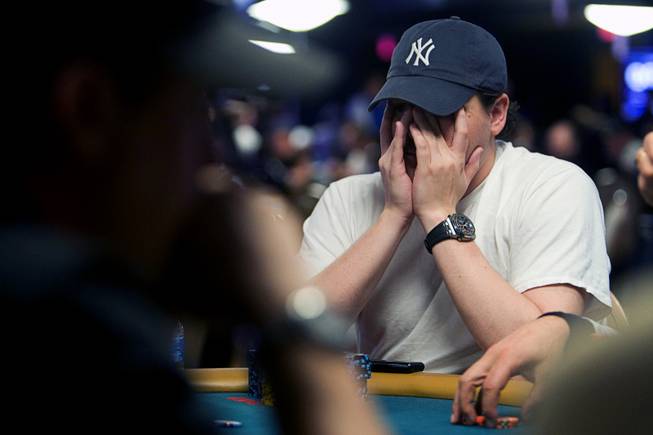
5. Shocking beat
No hand from the past five years better represents how cruel of a game poker can be than one that occurred on Day 3 of the 2011 Main Event — even if it happened hundreds of eliminations away from the money.
Playing on television from the ESPN featured table, Shaun Deeb and Max Heinzelmann both possessed healthy, above-average chip stacks. They put them to use by getting into a pre-flop raising war.
The action capped when Heinzelmann six-bet shoved all-in and prompted an immediate call from Deeb to create a pot of 424,100 chips that would put the winner near the top of the leaderboard.
Deeb had pocket aces to Heinzelmann’s ace-6 off-suit. The well-known local pro had a 93 percent chance of knocking out the German youngster.
There was no cause for concern when a 6 came on the flop. When the dealer landed a 6 on the river, however, Heinzelmann mouthed, “wow.”
In retrospect, it’s better that the heartbreak happened to one of the best in the world instead of one of the Main Event’s many recreational players. A lot of people would never be able to look at poker the same again.
-
4. Smallest pairs unbeatable for Joe Cada
By the time the 2009 final table was down to three players, Joe Cada had already questionably gone all-in and survived with pocket 4s and pocket 3s.
It was almost destined for the 21-year-old from Michigan to get rewarded by making his biggest gaffe with pocket 2s.
In a blind vs. blind encounter, chip-leader Antonie Saout looked down pocket queens after a raise from Cada. A re-raise from the Frenchman was met with an all-in declaration from Cada.
Cada’s enormous cheering section groaned when the hands were revealed, but they were about to see him come from behind once again.
The dealer spread out a flop that included a 2 and Cada’s friends engulfed him into a celebration pit. The pot set up Cada to win the tournament and the $8.5 million first-place prize.
Saout went out against Cada a few hands later, with pocket 8s against ace-king, in third place for $3.4 million.
-
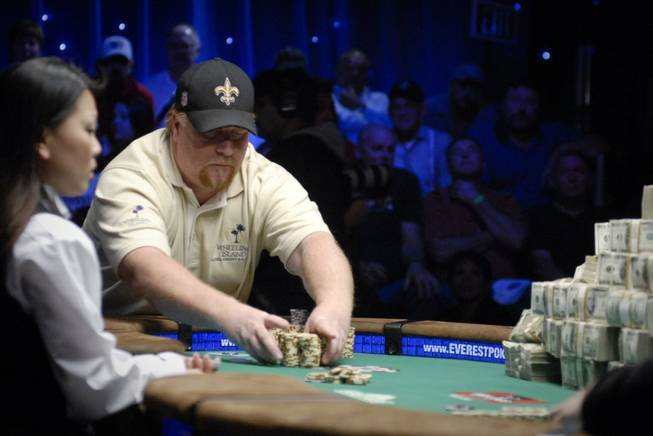
3. Flopped flushes
When 12 players remain in the Main Event, it’s usually a safe bet to assume those with the two biggest chip stacks will advance to the November Nine final table.
In 2009, that didn’t play out as true because of one fateful clash. Longtime chip leader Billy Kopp, who had fallen back a bit on Day 8, had recently moved to amateur Darvin Moon’s table when he raised with 5-3 of diamonds.
Moon called with queen-jack of diamonds. The flop was a spectacle: king-9-2 of diamonds to give both players flushes.
When Moon check-called a Kopp bet, it looked almost certain that the professional was going to lose a large percentage of his chips. But Kopp caught what could have served as a reprieve on the turn in another 2, opening the possibility of a full house.
It didn’t slow “The Patrolman” down, however, as he shoved all-in after a check-raise. Moon took one deep breath before calling and was relieved to see he had already clinched the hand with a higher flush.
The pot gave Moon one of the largest chip leads in WSOP history entering the final table, which he converted into a $5.1 payday for second place. Kopp exited in 12th for $896,730.
-
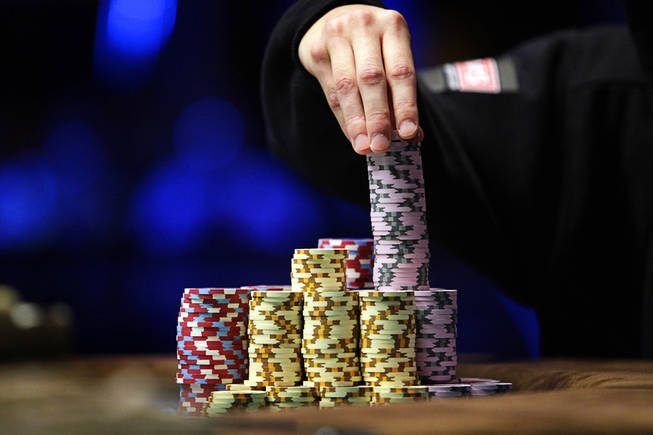
2. Aces Jacked
ESPN’s World Series of Poker cameras have never caught a moment with truer emotion than they did on Day 8 of the 2010 Main Event.
Realizing his second straight deep run in the world’s most prestigious poker tournament had come to an end, Matt Affleck eye’s widened in horror and his head dropped into his hands.
He walked out to the Rio hallway, where he spiked a water bottle against the floor and sobbed. Meanwhile, Jonathan Duhamel hid inside his black hoodie and flashed a devious grin.
Duhamel knew he had just benefitted from an influx of luck large enough to make a leprechaun jealous.
The 21-year-old from Montreal stubbornly stayed in a hand with pocket jacks despite repeated raises and bets from Affleck, concluding with an all-in, on a 10-9-7-queen board. Affleck flipped up pocket aces and stood up in preparation for the final community card.
Ten cards could save Duhamel from awarding the vast majority of his stack to Affleck, and he caught one of them on the river — an 8 to make a straight.
That sent Affleck out in 15th place, devastated despite the promise of a $500,165 check waiting for him. Duhamel scored nearly 18 times more than that with $8.9 million as the first Canadian champion in Main Event history.
-
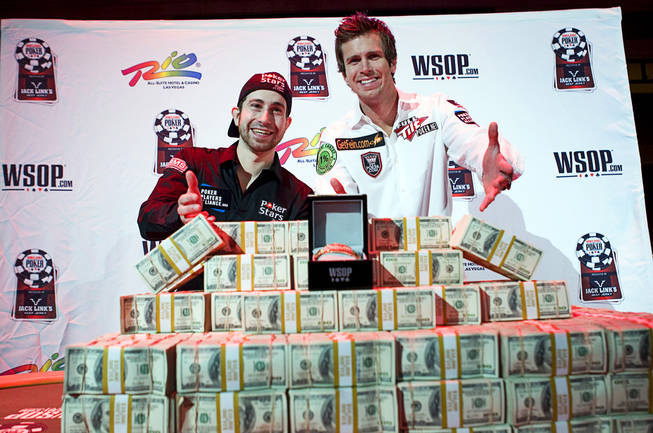
1. The largest pot in Main Event history
John Racener began eyeing the $4.1 million third-place prize and thinking about how it wasn’t so bad after all.
With three players left at the 2010 final table, Racener was way behind with 10 percent of the chips in play. Jonathan Duhamel and Joseph Cheong controlled the rest of the wealth.
Racener retreated to his rail to confide with friends and family who had cheered him on all night.
“One of my buddies said, ‘watch, they are going to get into a big who’s got the bigger stack, who’s toughest sort of hand,’” Racener said at the time.
Racener’s buddy was a soothsayer. Cheong and Duhamel began disregarding the $1.4 million pay jump between second and third places by playing back at each other recklessly.
It spiraled out of control in one hand where Cheong, the chip leader, shoved all-in with a sixth bet before the flop. Duhamel called, and 185 million chips were up for grabs.
Duhamel had pocket queens, catching Cheong bluffing with ace-7. The worst hand wouldn’t catch up on this instance, as the dealer spread out 3-9-2-6-8 as the community cards.
Cheong, who attempted to explain his play by saying Duhamel’s small bet sizing made him suspicious, went out a few minutes later and left the Rio with the $4.1 million most had assigned to Racener. Duhamel cruised in heads-up play with the more than 6-to-1 chip advantage, but Racener moved up to a $5.5 million payday.
Case Keefer can be reached at 948-2790 or [email protected]. Follow Case on Twitter at twitter.com/casekeefer.











Join the Discussion:
Check this out for a full explanation of our conversion to the LiveFyre commenting system and instructions on how to sign up for an account.
Full comments policy